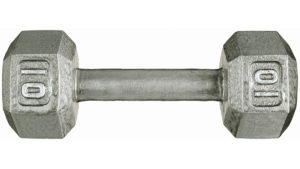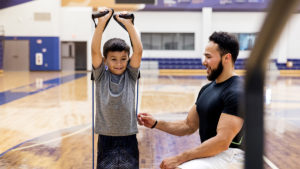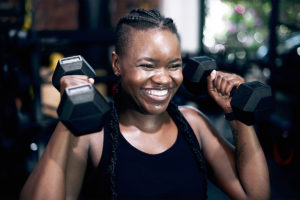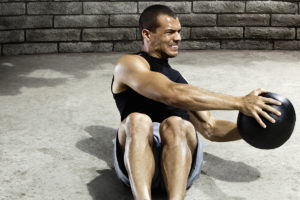Strength/Resistance
Weight Lifting Recovery Tips
Weightlifting is an excellent way to build strength, improve muscular endurance, and enhance overall fitness. However, proper recovery is essential to optimize muscle growth, prevent injury, and ensure long-term progress….
Train to Failure for Bigger Muscles
Advise clients to push to failure during resistance training when muscle growth is the objective, according to results published in Sports Medicine (2024). Florida Atlantic University researchers reviewed 55 studies to…
Resistance Training During Pregnancy Benefits the Unborn Child
Review study shows that pre-natal strength training is good for mother and child. Aerobic exercise during pregnancy is often recommended, while strength training benefits are overlooked. A new review study…
Heavy Resistance Training Provides Dividends in Older Age
Study finds resistance training near retirement age provides long lasting benefits. Motivate retirement-age adults to do a heavy resistance training program to reap more strength and functional benefits in later…
Muscle Hypertrophy: Hormonal Responses and Physiological Mechanisms
Introduction: Hypertrophy Matters! Personal trainers and fitness professionals often need to discuss the importance of muscle hypertrophy (i.e., diameter size increase of muscle) with clients. All too often, clients become…
Health and Fitness Benefits of Performing Aerobic and Resistance Training
You need both aerobic and resistance exercise. But can doing both in one workout cancel out the benefits? Learn the best way to combine them!
Cardio and Strength Training Reduces Heart Disease Risks
Here’s more evidence to encourage clients to mix cardio and strength training in their program for health benefits.
Body-Weight HIIT Exercise
Combining these modes of training to create a body-weight HIIT exercise program has proven benefits we’ll explore below.
Glutes, Glutes and More Glutes!
This article discusses the role of the glutes in normal function, defines its architecture, and presents several training techniques.
Keep the Lean Body Mass
Researchers found that higher volumes of resistance training with lower loads were better for female athletes for preserving lean body mass.
Is Rating of Perceived Exertion Effective for Program Design?
Are you using the rating of perceived exertion (RPE) during strength training sessions with clients? If not, you may want to try it.
Strength Training for Youth
If you train kids, are you including youth strength training? Researchers share evidence-based benefits of training as early as age 5–7.
The Ultimate Guide to Resistance Training Techniques
This article will highlight 10 advanced resistance training techniques that improve muscular fitness, strength and mass.
Immunity: A Trend Worth Supporting
While it may not be getting the same COVID-19 notoriety as the word “pivot,” “immunity” has a spine—and it’s much more than just a keyword.
Sample Exercises: Deadlifts and Deadshifts
Look for ways to add these sample deadlifts and deadshifts to your training programs. Your body, your clients and your baby will thank you.
Power Training for Older Clients
Power training for your active agers can be a vital part of programming. By helping your clients maintain speed, you will do them the service of training them for the sport of life.
Complex Training Workout for Athletes
To make the most of athletic training, take a look at complex training, which combines strength training with plyometric drills.
Arthritis and Exercise
Arthritis is a major health concern. According to the Centers for Disease Control and Prevention, 23% of all adults in the U.S., more than 54 million people, have arthritis. As a fitness professional, you can make a difference. Both the CDC and the Arthritis Foundation (arthritis.org) agree that exercise is an important tool in arthritis pain management and prevention.
Posture Correction for Static Damage
The word posture tends to evoke the image of a schoolgirl standing perfectly erect with a book on her head. More accurately, static posture refers to the way in which a person holds his or her body or assumes certain positions, such as sitting, standing or sleeping. The cumulative effect of the time spent in certain positions can lead to prolonged static-posture damage to both the musculoskeletal and myofascial systems of the body.
Types of Periodization Training
Researchers have focused on three types of periodization training: linear periodization, block periodization and undulating periodization.


















